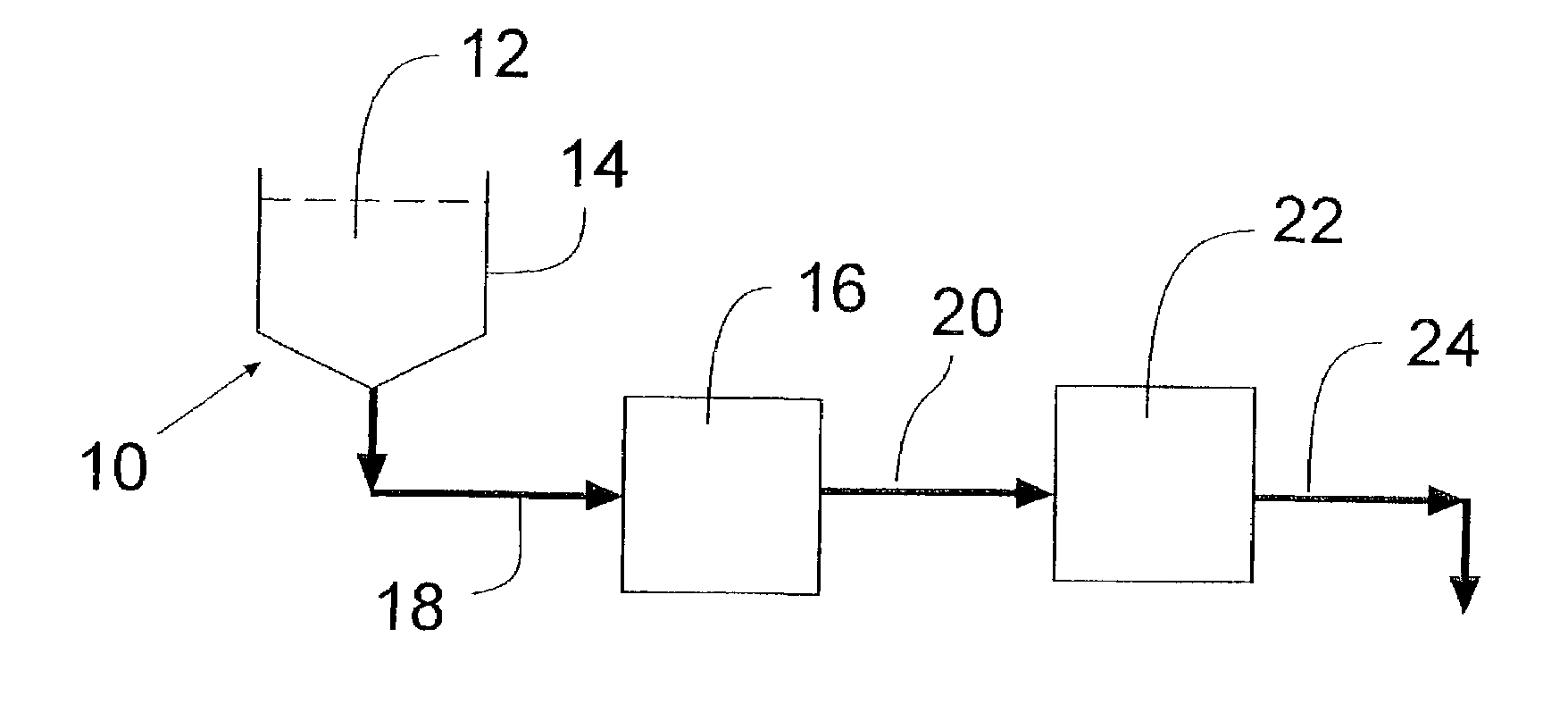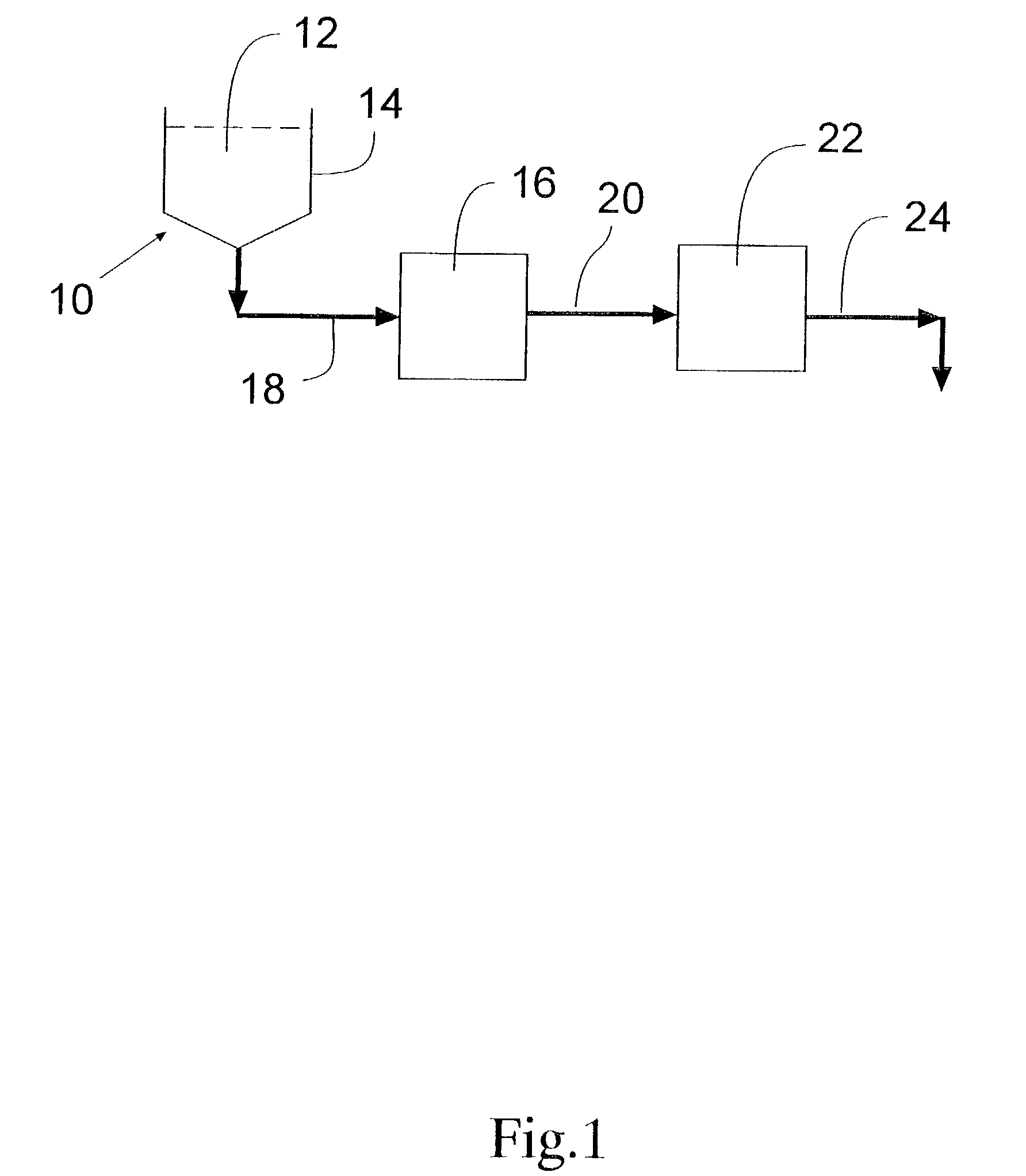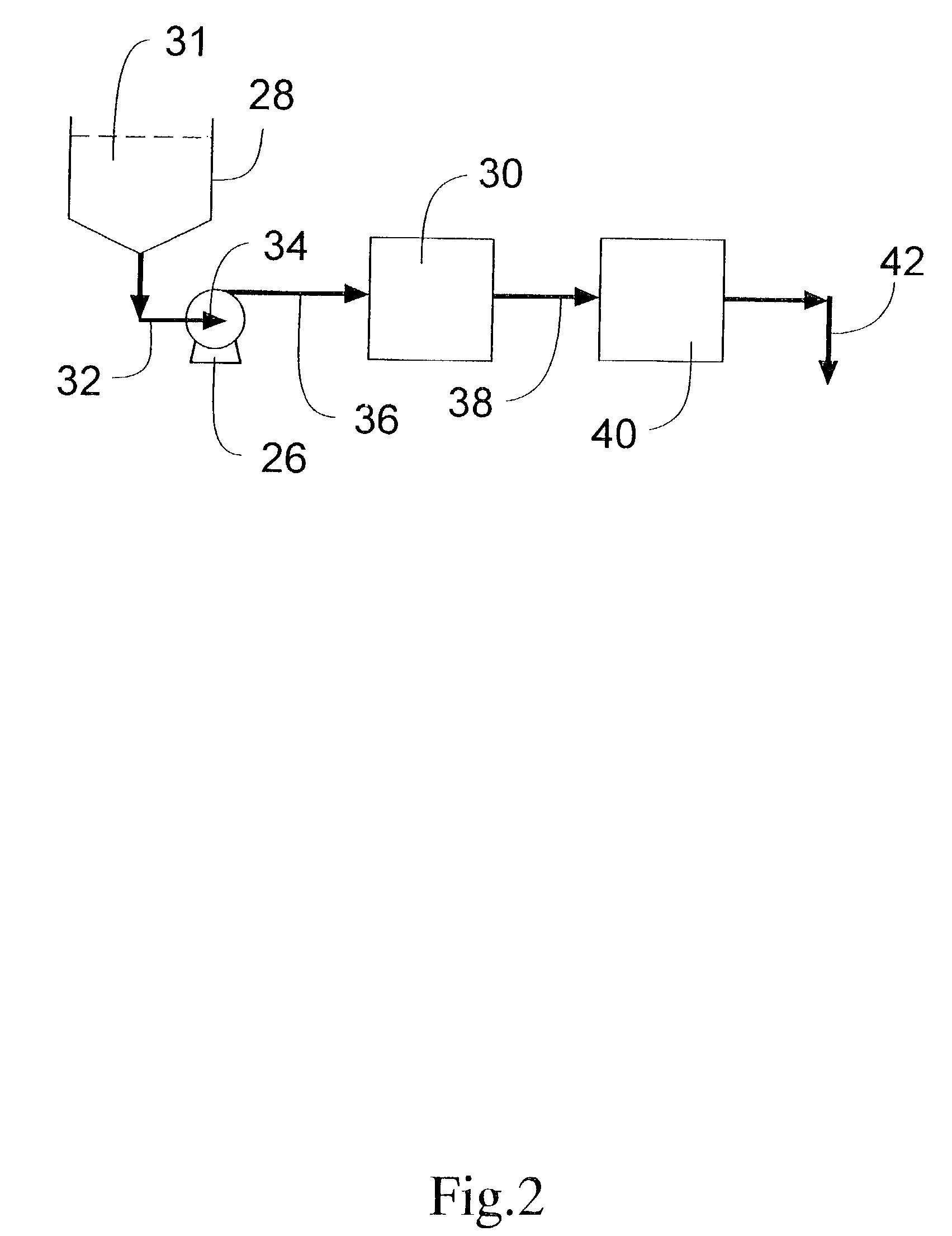Process for removing protein aggregates and virus from a protein solution
a technology of protein aggregates and protein solutions, applied in chemical/physical processes, peptides, water/sewage treatment by ion exchange, etc., can solve the problems of undesirable aggregates, expensive gel chromatography, and operate at the expense of protein activity, so as to prolong the useful life and reduce the cost of purchase and operation.
- Summary
- Abstract
- Description
- Claims
- Application Information
AI Technical Summary
Benefits of technology
Problems solved by technology
Method used
Image
Examples
example 1
[0032]An IgG aggregate feed solution (SeraCare 5% Human Gamma Globulin, available from SeraCare, Inc., Cat#HS-9000) was added to a phosphate buffer (10 g / L Difco FA buffer, pH 7.2, from Fisher Scientific, Cat#DF 2314150) and EDTA (10 mM ethylenediamine tetra acidic acid, disodium-calcium salt available from Sigma Aldrich, cat#ED2SC).
[0033]The aggregate feed solution was then modified to represent a 10% aggregate load by filtering 90% of the feed through a membrane that removed the protein aggregate (PLCXK membrane as cellulose UF membrane with a nominal molecular cutoff of 1000 kDaltons available from Millipore Corporation of Bedford, Mass.)
[0034]FIG. 3 shows the throughput results (liters of fluid processed / square meter of material before clogging of the material occurs) on the aggregate feed solution at 10% aggregates by three different modes of operation.
[0035]Mode #1 used the conventional normal flow viral filter without any aggregate removal step using a VIRESOLVE® NFP viral fi...
PUM
| Property | Measurement | Unit |
|---|---|---|
| Molecular weight | aaaaa | aaaaa |
Abstract
Description
Claims
Application Information
 Login to View More
Login to View More - R&D
- Intellectual Property
- Life Sciences
- Materials
- Tech Scout
- Unparalleled Data Quality
- Higher Quality Content
- 60% Fewer Hallucinations
Browse by: Latest US Patents, China's latest patents, Technical Efficacy Thesaurus, Application Domain, Technology Topic, Popular Technical Reports.
© 2025 PatSnap. All rights reserved.Legal|Privacy policy|Modern Slavery Act Transparency Statement|Sitemap|About US| Contact US: help@patsnap.com



